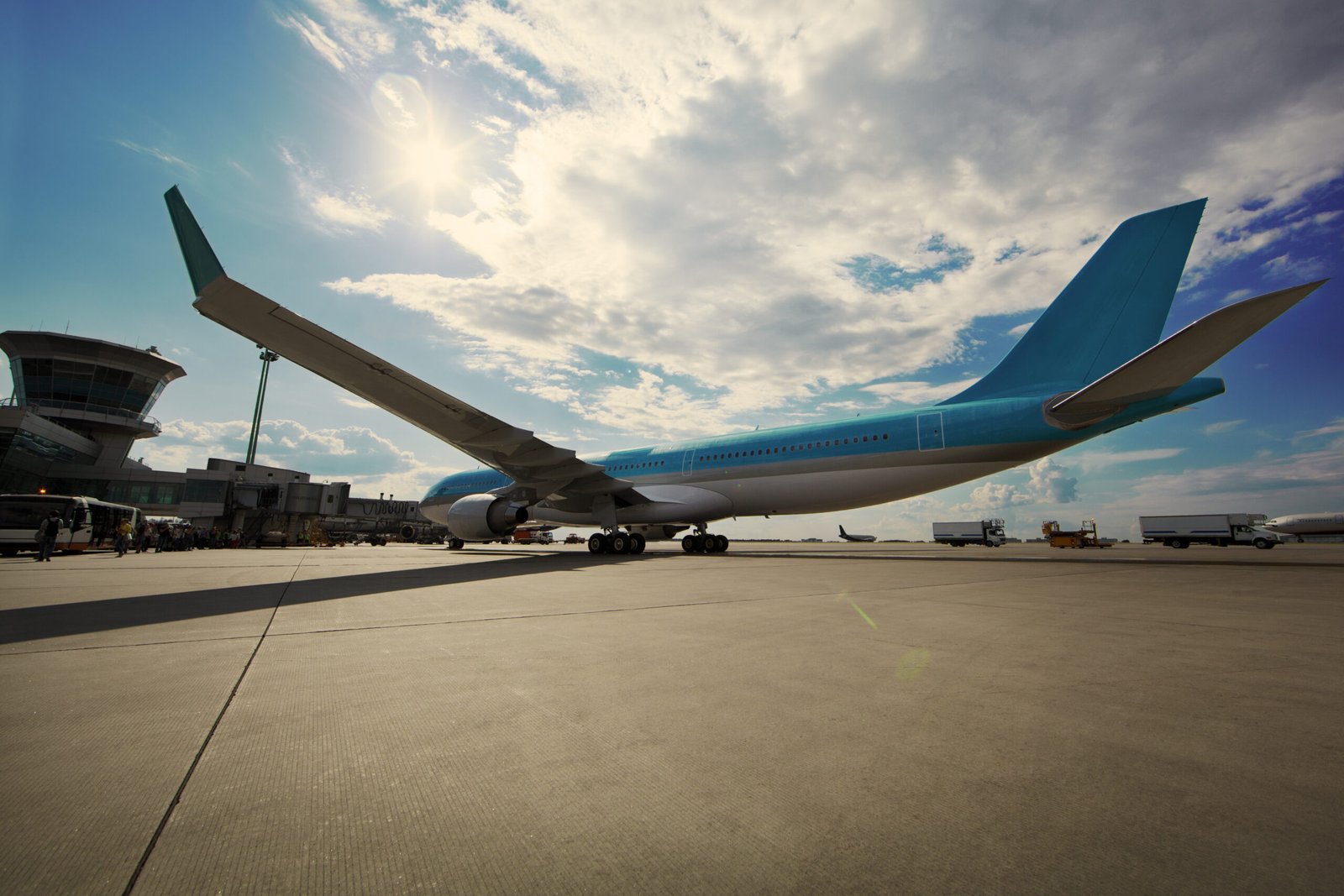flight simulators
From Propellers to Jets: A Journey Through Aviation History
The history of aviation is a remarkable tapestry woven from innovation, determination, and the innate human desire to conquer the skies. From the first wood-and-canvas biplanes that sputtered across fields to the sleek, high-speed jets soaring at 30,000 feet, aviation has evolved dramatically over the decades. This evolution continues today with an array of educational pathways for aspiring aviators and enthusiasts alike.
When it comes to pursuing a career in aviation, several types of courses are available at various aviation schools. For those captivated by the mechanics of flight, there are programs specializing in aircraft maintenance and engineering. These courses delve into aerodynamics, propulsion systems, and avionics—essential knowledge for keeping aircraft safe and operational.
For future pilots, flight training is paramount. Many schools offer private pilot licenses (PPL), instrument ratings (IR), commercial pilot licenses (CPL), and even airline transport pilot (ATP) certifications. Each course builds on practical skills and theoretical knowledge needed for safe navigation through diverse flying conditions. Additionally, specialized instruction in areas like helicopter piloting or glider operation provides niche opportunities for those looking to diversify their skill set.
Moreover, universities often integrate aviation management programs that combine business principles with aviation regulations, preparing students for leadership roles within airlines or airport operations. With such a wide range of options available, prospective students can tailor their education according to their passions within this dynamic field.
As one embarks on this journey through aviation education, staying informed about industry trends and insights is crucial. Fortunately, numerous blogs and websites cater to both professionals and enthusiasts alike. Some notable aviation blogs include “AirlineReporter,” which covers news on airlines’ latest innovations; “Flying Magazine,” which offers advice on flying techniques; and “AeroSavvy,” focusing on pilot training resources.
Social media platforms also serve as fantastic conduits for connecting with fellow aviators. On Instagram or Twitter, accounts like @pilotlife showcase breathtaking aerial snapshots while providing relatable content about daily life as a pilot. Meanwhile, Facebook groups dedicated to specific aircraft models or flying experiences create vibrant online communities where members share tips and stories.
For those seeking formal education or practical experience in flight operations specifically within the United States framework, FAA-approved flight schools are indispensable resources. The FAA maintains rigorous standards ensuring that accredited institutions provide comprehensive training covering all aspects of piloting—from theoretical coursework to hands-on flight experience using state-of-the-art simulators.
These simulation technologies have revolutionized pilot training by offering realistic environments where students can practice maneuvering without risks associated with real-life scenarios. They allow learners to familiarize themselves with cockpit instruments while engaging in emergency procedures under controlled settings—a critical component in building confidence before taking control of actual aircraft.

In summary, from propeller-powered pioneers like the Wright brothers to today’s advanced jets capable of crossing continents swiftly—aviation history is filled with milestones that inspire countless individuals worldwide. By exploring varied educational paths through specialized courses at aviation schools while leveraging contemporary resources like blogs and social media platforms—future aviators are well-equipped not only to understand but also contribute actively to this ever-evolving industry that has captured our imaginations since time immemorial.

Navigating the Skies: A Beginner’s Guide to Understanding Aviation
Embarking on a journey into the world of aviation can be exhilarating yet overwhelming. With so many paths one can take, it’s crucial to understand the various options available. From specialized schools to an abundance of online resources, this guide aims to illuminate your route through the skies.
### Types of Aviation Schools and Courses
When considering a career in aviation, the first step is selecting the right type of school. Here are some key categories:
1. **Flight Schools**: These institutions focus primarily on training pilots. They offer programs ranging from private pilot certificates to commercial licenses and even advanced ratings for instrument flying.
2. **Airline Transport Pilot (ATP) Schools**: For those aspiring to fly for commercial airlines, ATP schools provide intensive training specifically tailored for airline operations, including multi-engine flying and crew resource management.

3. **Aviation Maintenance Schools**: If you’re more interested in keeping aircraft in top shape rather than piloting them, consider enrolling in an aviation maintenance program. Here, students learn about airframe and powerplant systems, gaining skills necessary for FAA certifications.
4. **Aerospace Engineering Programs**: Universities often feature degree programs focused on aerospace engineering—perfect for those who wish to design and develop aircraft or spacecraft.
5. **Air Traffic Control Training Programs**: These courses prepare individuals for careers as air traffic controllers, teaching them how to manage aircraft safely within controlled airspace.
6. **Simulator Training Facilities**: Many flight schools now utilize advanced simulators that replicate real flying conditions without leaving the ground—ideal for practicing maneuvers or preparing for exams.
### Top Aviation Blogs and Websites
Staying informed about aviation trends is vital for any aspiring aviator or enthusiast. Here are some excellent blogs and websites worth bookmarking:
**AOPA (Aircraft Owners and Pilots Association)**: An invaluable resource packed with articles on flying tips, legal regulations, and industry news.
**Airliners.net**: A vast repository of photographs and forums where aviation enthusiasts share their experiences.
**Flying Magazine**: This publication covers everything from pilot techniques to product reviews.
**Pilot’s Digest**: A blog that offers insights into pilot life while emphasizing safety practices.
**AvWeb**: Focused on news relevant to pilots, AvWeb also features podcasts covering current topics in aviation.
For social media aficionados:
Follow hashtags like #aviationlife or #pilotlife on Instagram for stunning visuals from fellow aviators.
Join Facebook groups such as “Pilots Without Borders” or “Women in Aviation” to network with others who share your passion.
### FAA Flight Schools & Simulators
The Federal Aviation Administration (FAA) maintains a comprehensive list of accredited flight schools across the country—each providing different specialties tailored to student needs. When searching for a suitable school, look out for those that offer both ground instruction and simulator training; these elements combine theoretical knowledge with practical application effectively.

Moreover, utilizing high-quality flight simulators can significantly enhance your learning experience by allowing you to practice critical scenarios without real-world risks involved. Many reputable schools incorporate state-of-the-art technology into their curricula that mimic actual cockpit environments.
In conclusion, understanding aviation is not merely about dreaming of soaring through clouds but involves meticulous planning and education. By exploring various types of schools, engaging with numerous online platforms dedicated to this field, and taking advantage of FAA resources—and perhaps even virtual simulators—you’re well on your way toward conquering the skies! Remember that every seasoned pilot once started just where you are now—so buckle up; adventure awaits!
Flight Safety 101: What Every Traveler Should Know
When it comes to flying, safety is paramount. Understanding the fundamentals of aviation can enhance your travel experience and provide you with peace of mind as you soar through the skies. Whether you’re an aspiring pilot or just a curious traveler, knowing about aviation schools, resources, and regulations will empower you with knowledge that enhances your journey.
*Aviation Schools by Types of Courses**
If you’re captivated by the world of aviation and are considering pursuing a career in this field, numerous educational paths await you. Aviation schools offer diverse courses tailored to different interests:
1. **Pilot Training Programs**: These are foundational for anyone looking to become a commercial or private pilot. Courses typically cover flight theory, navigation, meteorology, and hands-on flight training.
2. **Aircraft Maintenance Engineering**: This program focuses on the technical aspects of aircraft maintenance. Students learn about various systems within an airplane and how to perform inspections and repairs.
3. **Air Traffic Control Training**: This unique course equips students with skills necessary for managing air traffic safely. It covers communication protocols and radar operation.
4. **Aviation Management**: For those interested in the business side of aviation, this course covers airport operations, airline management, and regulatory environments.
5. **Flight Attendant Training**: Focused on customer service and safety procedures, this program prepares individuals for dynamic roles in passenger care during flights.
Each type of course plays a pivotal role in maintaining high standards for safety within aviation.
*Essential Aviation Blogs and Websites**
In addition to formal education, staying informed through reputable blogs and websites is crucial for both travelers and industry enthusiasts alike. Here’s a list that can guide your exploration:
**Airliners.net**: A treasure trove for aviation photography enthusiasts; it also features forums discussing various topics related to flying.
**The Points Guy (TPG)**: While primarily focused on travel rewards programs, TPG offers insights into airlines’ safety records alongside their tips on maximizing travel experiences.
**Flying Magazine**: This publication provides articles covering everything from flight techniques to emerging technologies in aviation.
**Simple Flying**: Stay updated with daily news related to airlines worldwide; they often highlight significant changes in safety regulations too.
Social media platforms can also be rich sources of information:
Follow hashtags like #AvGeek or #AviationSafety on Twitter for real-time updates from professionals.
Join Facebook groups such as “Flying & Avionics” where members share experiences and advice concerning air travel safety.
LinkedIn has numerous professional groups dedicated to discussions around aviation trends, regulations, and best practices.
*FAA Flight Schools/Simulator Training**
The Federal Aviation Administration (FAA) oversees flight training standards across the United States. When selecting a flight school or simulator program, consider these attributes:
1. **Accreditation**: Ensure that any school is FAA-approved; accreditation guarantees adherence to rigorous training protocols ensuring student safety.
2. **Simulator Use**: Modern simulators provide realistic environments without leaving the ground! They are instrumental in teaching emergency procedures safely while enhancing skills before actual flights.
3. **Reputation & Reviews**: Research feedback from former students regarding their training experiences—insights from alumni can reveal invaluable information about a school’s focus on safety measures during instruction.
As travelers embark on their next adventure by air, understanding these facets of aviation not only fosters appreciation but also promotes safer journeys overall. Knowledge is power; equip yourself accordingly! Safe travels!
From Runway to Cloud: The Journey of an Airline Pilot
Becoming an airline pilot is a dream that dances in the minds of many aviation enthusiasts. But the journey from runway to cloud is paved with rigorous training, education, and passion. Let’s explore the diverse educational paths available for aspiring pilots, valuable online resources, and the critical role of FAA-approved flight schools.
*Aviation Schools by Types of Courses**
When it comes to pursuing a career in aviation, the choices can be overwhelming. Aviation schools offer various courses catering to different aspirations within the field:
1. **Private Pilot License (PPL) Programs:** These courses introduce students to fundamental flight principles, including navigation and aircraft operations. Ideal for those who want to fly recreationally or gain foundational skills.
2. **Commercial Pilot License (CPL) Courses:** For those aiming to make flying their profession, CPL programs dive deeper into advanced flying techniques, regulations, and flight planning.
3. **Airline Transport Pilot (ATP) Certification:** This is often regarded as the pinnacle of pilot certifications. ATP courses prepare candidates for positions with airlines and cover extensive knowledge on multi-engine operations and complex aircraft systems.
4. **Flight Instructor Ratings:** Many pilots choose to become Certified Flight Instructors (CFI) after obtaining their CPL or ATP credentials. This path allows them not only to gain hours but also share their passion for flying with future aviators.
5. **Specialized Training Programs:** These include courses on specific aircraft types or advanced maneuvers such as aerobatics or bush flying—perfect for those looking to specialize further.
*A List of Aviation Blogs, Websites, and Social Media Sites**
In this digital age, staying informed about trends in aviation is easier than ever! Here are some must-follow blogs and websites:
**Airline Reporter:** This blog covers airline news with a focus on technology and travel experiences.
**AvWeb:** A comprehensive source for aviation news that includes articles on safety issues and industry updates.
**Flying Magazine:** A well-respected publication that offers insights into pilot training, aircraft reviews, and real-life flying stories.
For social media enthusiasts:
**Instagram (@aviationdaily):** Follow stunning aerial photography showcasing breathtaking views from above.
**Twitter (@airlinepilotlife):** Tweets from airline pilots sharing day-to-day experiences in the cockpit.
**YouTube Channels like “Captain Joe” provide educational content alongside entertaining vlogs about life as a pilot.
*FAA Flight Schools/Airplane Schools/Simulators**
Navigating through your choices requires attention when selecting an FAA-approved flight school. These institutions adhere strictly to federal regulations ensuring high training standards:
**Part 61 vs Part 141 Schools:** Part 61 schools offer more flexible schedules tailored for working individuals while Part 141 schools provide structured curriculums ideal for full-time students aiming at quicker completion times.
**Simulator Training Facilities:** With advancements in technology, many flight schools incorporate advanced flight simulators into their curricula. Simulators allow students to practice emergency procedures safely without leaving the ground—an invaluable part of modern pilot training.
As you embark on this fascinating journey toward becoming an airline pilot—from mastering theoretical knowledge at a classroom desk to soaring through clouds—it’s essential to immerse yourself fully in both educational resources and community connections within aviation circles. Each step taken builds towards that exhilarating moment when you take control of an aircraft destined for horizons unknown!

Behind the Scenes of Aviation: A Day in the Life of an Airline Pilot
Ever wondered what it’s like to soar through the sky as an airline pilot? The journey begins long before takeoff, often in aviation schools where aspiring pilots gain essential knowledge and skills. These institutions offer a variety of courses tailored to different aspects of aviation. For instance, flight training can be divided into several key areas: private pilot training, instrument rating, commercial pilot certification, and airline transport pilot (ATP) preparation. Each course builds on the last, creating a comprehensive path toward a successful career in aviation.
Private pilot courses focus on foundational flying skills and regulations, allowing students to command small aircraft. As they progress to instrument ratings, they delve deeper into navigation and flying under various weather conditions. The commercial pilot course elevates students from recreational flying to professional standards, while ATP programs sharpen their skills for handling larger aircraft that operate in commercial airspace.
Once equipped with knowledge from these schools, many pilots turn to various online resources for continued learning and community engagement. Blogs and websites dedicated to aviation offer insights into industry trends, personal experiences, and technical advice that can prove invaluable. Some popular sites include Airliners.net for photography enthusiasts and Plane & Pilot Magazine for detailed articles covering everything from technical innovations to safety tips.
Social media platforms have also become vital tools for networking among pilots. Twitter hosts lively discussions about current events affecting aviation; Instagram showcases stunning aerial shots; LinkedIn connects professionals across the industry. Facebook groups create tight-knit communities where members share stories or seek advice—an excellent way for new pilots to learn from seasoned veterans.

However, education doesn’t stop at traditional classroom settings or online forums; FAA-certified flight schools play a significant role in shaping future aviators. These institutions provide hands-on training with experienced instructors who guide students through every aspect of flying—from pre-flight checks to landing procedures. Schools like Embry-Riddle Aeronautical University or Purdue University are renowned for their rigorous programs that emphasize both theoretical knowledge and practical application.
Simulators are another essential component of modern flight training. They allow students to practice various scenarios without leaving the ground—perfectly safe yet incredibly realistic environments where they can hone their skills under pressure. Whether it’s dealing with engine failure or navigating adverse weather conditions, simulators prepare pilots mentally for real-world challenges before they step into the cockpit of an actual aircraft.

As dawn breaks on a typical day in the life of an airline pilot, excitement fills the air—both literally and figuratively! After arriving at the airport early in the morning, pilots conduct thorough pre-flight checks alongside ground crew members. This meticulous attention ensures that every detail is accounted for before embarking on flights that may span thousands of miles.
The cockpit becomes their second home as they communicate with air traffic control while navigating complex routes above bustling cities and sprawling landscapes below them. Every landing represents not just a physical return but also an emotional one—a moment when dedication meets passion high above the clouds.
In conclusion, becoming an airline pilot involves much more than simply sitting behind controls; it requires extensive education through aviation schools offering diverse courses alongside invaluable resources available online today.
With commitment coupled with exploration within this dynamic field—the sky truly is not just a limit but rather a boundless horizon waiting to be discovered!


